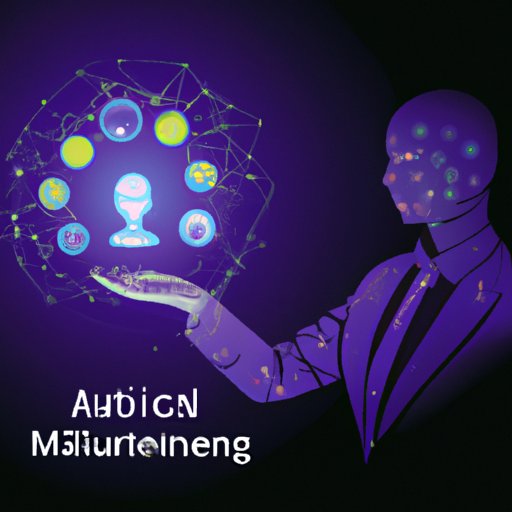Introduction
The terms Artificial Intelligence (AI) and Machine Learning (ML) are often used interchangeably, but they are actually two distinct technologies. AI is a broad term that refers to machines that can mimic human intelligence, while ML is a subset of AI that enables machines to learn from data and improve with experience. This article will explore the differences between AI and ML, as well as the benefits each technology brings to the table.
Comparison of AI and ML
What’s the Difference? AI is a broad concept that encompasses many different technologies, including robotics, natural language processing, computer vision, and more. It is essentially a system that is designed to replicate the cognitive functions of humans, such as problem solving, decision making, and learning. ML, on the other hand, is a specific type of AI that focuses on teaching machines how to learn from data and improve with experience.
How Do They Work Together? The main difference between AI and ML is that AI is a general concept, while ML is a specific technology. AI is a broad umbrella term that covers a range of technologies, including ML. ML is a subset of AI that focuses on using algorithms to enable machines to learn from data and improve with experience. By combining AI and ML technologies, businesses can create powerful systems that can process large amounts of data and make decisions quickly and accurately.
AI vs. ML: What Does Each Technology Bring to the Table?
An Overview of AI and ML Technologies: What Can They Do? AI and ML technologies have a wide range of applications, from healthcare to finance. AI can be used to develop intelligent assistants, automated customer service agents, and robotic process automation tools. ML can be used for predictive analytics, facial recognition, and natural language processing. By leveraging both AI and ML technologies, businesses can gain insights from data, automate processes, and improve customer experiences.
Harnessing the Power of AI and ML for Business Applications AI and ML technologies can be used to optimize business operations, improve customer experiences, and drive innovation. AI can be used to analyze customer data and provide personalized services, as well as to automate mundane tasks. ML can be used to identify patterns in large datasets, uncover hidden trends, and make predictions about future outcomes. By leveraging AI and ML technologies, businesses can gain a competitive edge and better serve their customers.
Impact on Human-Computer Interaction
Understanding the Benefits and Challenges of AI and ML Technologies AI and ML technologies offer a number of benefits, such as improved accuracy, faster decision-making, and increased efficiency. However, there are also some challenges associated with these technologies, including potential risks to privacy, security, and job displacement. It is important to consider these potential issues when deploying AI and ML technologies in order to ensure that they are used safely and responsibly.
How AI and ML Impact Human-Computer Interaction AI and ML technologies are revolutionizing the way humans interact with computers. AI-powered chatbots and virtual assistants are becoming increasingly common, allowing users to interact with machines in a more natural way. ML-powered algorithms can be used to analyze large datasets and uncover trends and insights, providing valuable information to business owners and decision makers. AI and ML are also being used to develop autonomous vehicles and robots, which could drastically reduce the amount of human labor required in many industries.
Conclusion
AI and ML are transforming the way businesses operate and interact with customers. AI is a broad concept that encompasses many different technologies, while ML is a specific type of AI that allows machines to learn from data and improve with experience. Both AI and ML technologies offer a number of benefits, including improved accuracy, faster decision-making, and increased efficiency. However, it is important to consider potential risks and challenges when deploying these technologies. By harnessing the power of AI and ML, businesses can gain a competitive edge and better serve their customers.
(Note: Is this article not meeting your expectations? Do you have knowledge or insights to share? Unlock new opportunities and expand your reach by joining our authors team. Click Registration to join us and share your expertise with our readers.)
